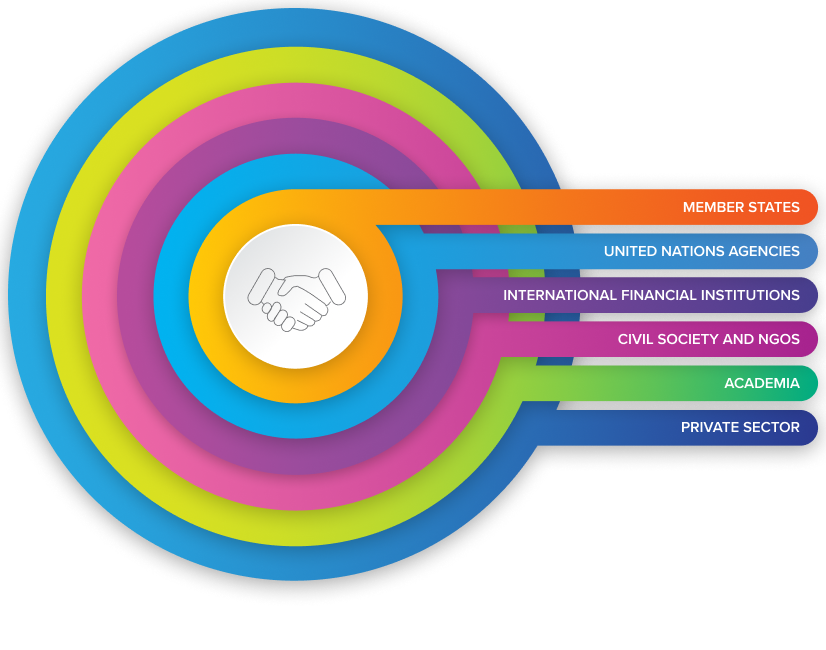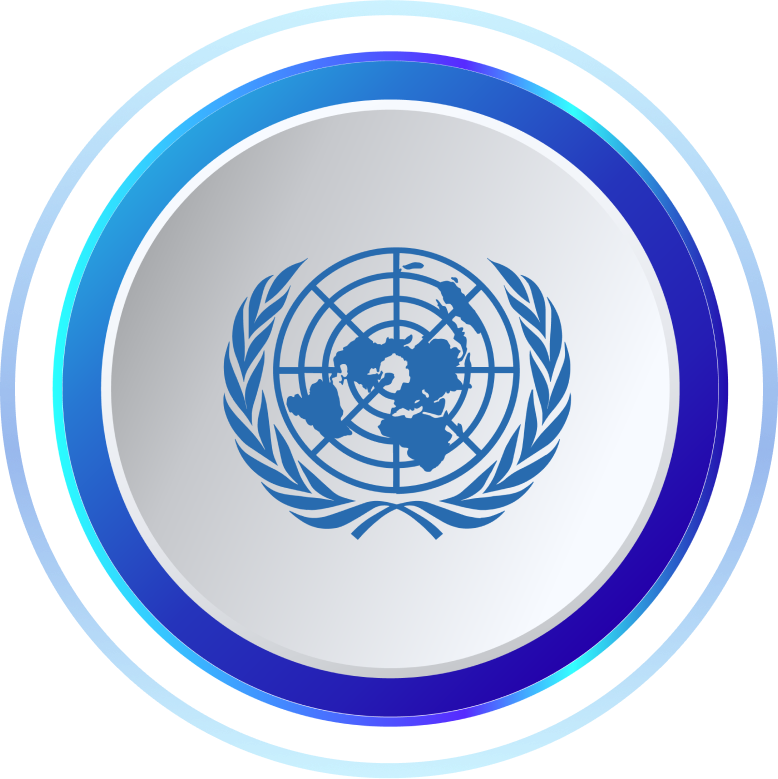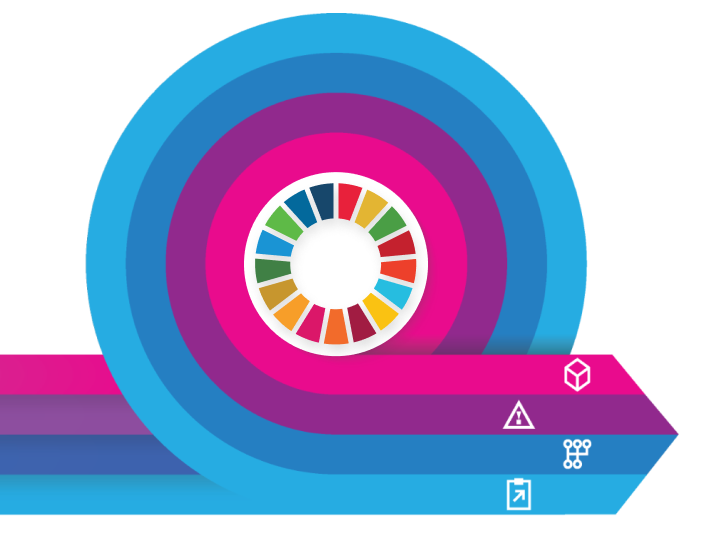Foreword
This is a critical moment for the world, and for development. A planetary emergency and the pandemic have depleted the world’s natural resources and widened poverty and inequality. Up to one billion people could be living in extreme poverty by 2030 unless we seize this opportunity for a decisive push towards the Sustainable Development Goals (SDGs).
But this is also a moment of choice: an opportunity to learn from our experience, to do things differently, to aspire to greater shared goals. This new Strategic Plan 2022-2025 describes how UNDP intends to work together with our partners to deliver what’s required of us in these extraordinary times. Collaborating across the revitalized UN system and beyond for stronger collective results. Applying integrated approaches aimed at transformative change. Supporting governments and communities to rebound from COVID-19 and build forward better.
The Strategic Plan is grounded in UNDP’s continued commitment to eradicating poverty, accompanying countries in their pathways towards the SDGs and working towards the Paris Agreement. It envisions bold goals, making a difference to millions of lives, including through tackling multidimensional poverty, energy access, elections participation and development financing. It explains how UNDP will develop our six signature solutions – powered by digitalisation, innovation and development financing – for greater impact. It sets out practical steps towards becoming an even more agile and anticipatory organisation, investing further in our people, business model and operational excellence.
The Plan describes how the combination of our deep local experience and our rich global network, tapping into countries’ knowledge and shared experience, delivers value to our partners. How we will foster innovation and creativity to help change systems and tackle the hardest challenges standing between us and the SDGs. All this to scale and accelerate progress towards green, inclusive transitions that empower every last person through greater opportunity and resilience.
The Plan is the result of extensive collaboration with our many partners. I am immensely grateful to them, and to all our UNDP teams, whose contributions have helped produce a Plan that truly reflects the diversity of all the countries, communities and people whom UNDP serves.
I invite you to read the Plan itself and learn more. With your support and collaboration, together UNDP can work with countries to expand people’s choices for a fairer, sustainable future, to build the world envisioned by Agenda 2030 with planet and people in balance.

Administrator
United Nations Development Programme

Strategic context
Advancing the future of development
The challenge of reaching Agenda 2030 was already significant, even before the COVID-19 pandemic hit. Compounded by a climate emergency, political polarization and challenged multilateralism, continued conflicts and forced displacement, the number of people living in poverty rose in 2020 for the first time since 1998 by an estimated 119-124 million. Inequalities are growing, and the traditional social contract is no longer working for many.
Today’s development challenges are dynamic, interconnected puzzles of multidimensional risk that require systemic solutions. Multilateral cooperation is vital in addressing these shared challenges that cross boundaries of geography and time.
No country has yet achieved the combination of very high human development with a light ecological footprint. The impacts of climate change and biodiversity loss are growing. In this complex, uncertain landscape, the SDGs and the Paris Agreement offer clarity of purpose and a way forward.
In the next four years, UNDP will work with countries to make a difference to millions of lives:
to escape multidimensional poverty
to gain access to clean energy
to participate in elections, many for the first time
of public expenditure and private capital investment in the SDGs
What We Do
UNDP’s development offer


UNDP’s work is summarized in the Strategic Plan by this “3x6x3” framework.
This combination will help UNDP continue to deliver on what it does best: integrated development solutions driven by country priorities.
Directions of change
Guiding people and planet beyond 2025
During this Plan and beyond, UNDP will be accompanying countries towards the SDGs through country programmes, driven by national development choices, and with poverty eradication at their core.
To this end, we support countries in pursuing three directions of systemic change:
including green, inclusive and digital transitions: working with countries to effect change in systems and structures that shape a country’s sustainable development
a rights-based approach centered on empowerment, inclusion, equity, human agency and human development
strengthening countries and institutions to prevent, mitigate and respond to crisis, conflict, natural disasters, climate and social and economic shocks
Signature Solutions
Supercharged for greater results
Learning from the experience of the last four years, UNDP will:
- Prioritize where country demands are greatest
- Focus on UNDP’s strongest capabilities and role within the UN system
- Refine and develop the signature solutions for greater impact and scale
- Deliver integrated solutions through a systems approach

Tackling inequality of opportunities by investing in the enhanced capabilities people need to move above the poverty line and keep moving forwards.
Helping countries address emerging complexities by “future-proofing” governance systems through anticipatory approaches and better management of risk.
Supporting countries and communities in building resilience to diverse shocks and crises, including conflict, climate change, disasters and epidemics.
Putting nature and the environment at the heart of national economies and planning; helping governments protect, manage and value their natural assets.
Increasing energy access for those furthest behind and accelerating the transition to renew-able energy.
Confronting the structural obstacles to gender equality and strengthening women’s economic empowerment and leadership.
Enablers
Maximising development impact
Enablers are capacities and approaches to scale-up development impact for country partners and within UNDP’s own systems:
Supporting countries to build inclusive, ethical and sustainable digital societies
Empowering governments and communities to enhance the performance of entire systems, making them adaptive and resilient
Partnering with governments and the private sector to align public and private capital flows with the SDGs and mobilise finance at scale

Global partnerships
Forging connections for the SDGs
Delivering results at the speed and scale needed to reach Agenda 2030 depends on close partnerships with a diverse range of actors working towards common goals. UNDP’s longstanding partnerships leverage the diverse capabilities, resources and knowledge of our partners.
The next four years will see UNDP strengthening these existing partnerships and forging new ones. Using our convening power to continue building strategic alliances with marginalized voices and empowering local actors.
The partnerships of the future require flexible instruments, modalities and funding, better suited to new types of partners or new ways of collaborating (e.g., “creative commons” approaches towards sharing intellectual property).
UNDP will also work with partners to advocate for, and facilitate, global and regional cooperation around common challenges – from pandemics to conflict to green transitions – while showcasing the value of multilateral solutions.
A strong partner in the UN system
Complementing our capabilities
As we work with partners across the UN system, we draw on each other’s complementary strengths and capabilities to deliver stronger results.
Better never stops
Building from lessons learned
The Strategic Plan 2018-2021 set out an ambitious agenda: to transform UNDP into a more nimble, innovative thought leader, more effective and efficient at delivering results, a trusted partner for countries in reaching the SDGs.
The Strategic Plan 2022-2025 continues in this direction, building on the progress of the last four years. It draws on assessments, evaluations and audits, and on the lessons of experience, including from our COVID-19 response.
Conversations with diverse practitioners and thought leaders from government, civil society, the private sector, the UN system and UNDP staff worldwide have also enriched the Plan.
Key lessons to which the Plan responds include:
The power of integration
Understanding and managing risk
Modernising operational systems and structures
Updating programming arrangements and implementation modalities

Global, regional, local
UNDP’s network brings the world together, driving sustainable impact and results for people and planet.
-
Latin America and the Carribbean
Panama Regional Hub
Argentina
Barbados and the Eastern Caribbean (covering Anguilla, Antigua and Barbuda, Barbados, the British Virgin Islands, the Commonwealth of Dominica, Grenada, Montserrat, Saint Lucia, St. Kitts and Nevis, St. Vincent and the Grenadines)
Bolivia
Brazil
Chile
Colombia
Costa Rica
Cuba
Dominican Republic
Ecuador
El Salvador
Guatemala
Guyana
Haiti
Honduras
Jamaica (covering The Bahamas, Belize, Bermuda, Cayman Islands, Jamaica, Turks and Caicos Islands)
Mexico
Panama
Paraguay
Peru
Suriname
Trinidad and Tobago (covering Aruba, Curacao, Sint Maarten, Trinidad and Tobago)
Uruguay
Venezuela
-
North America
New York headquarters
-
Africa
Addis Ababa Regional Service Centre
Angola
Benin
Botswana
Burkina Faso
Burundi
Cameroon
Cape Verde
Central African Republic
Chad
Comoros
Congo (Dem. Republic of)
Congo (Republic of)
Côte d’Ivoire
Equatorial Guinea
Eritrea
Eswatini
Ethiopia
Gabon
Gambia
Ghana
Guinea
Guinea-Bissau
Kenya
Lesotho
Liberia
Madagascar
Malawi
Mali
Mauritania
Mauritius and Seychelles
Mozambique
Namibia
Niger
Nigeria
Rwanda
São Tomé and Príncipe
Senegal
Sierra Leone
South Africa
South Sudan
Tanzania
Togo
Uganda
Zambia
Zimbabwe
-
Arab States
Amman Regional Hub
Algeria
Bahrain
Djibouti
Egypt
Iraq
Jordan
Kuwait
Lebanon
Libya
Morocco
Programme of Assistance of the Palestinian People
Saudi Arabia
Somalia
Sudan
Syria
Tunisia
Yemen
-
Europe and Central Asia
Istanbul Regional Hub
Albania
Armenia
Azerbaijan
Belarus
Bosnia and Herzegovina
Cyprus
Georgia
Kazakhstan
Kosovo (as per UNSCR 1244)
Kyrgyzstan
Moldova
Montenegro
North Macedonia
Serbia
Tajikistan
Turkey
Turkmenistan
Ukraine
Uzbekistan
-
Asia and the Pacific
Bangkok Regional Hub
Afghanistan
Bangladesh
Bhutan
Cambodia
China
Democratic People’s Republic of Korea
India
Indonesia
Iran
Lao PDR
Malaysia (covering Brunei Darussalam, Malaysia, Singapore)
Maldives
Mongolia
Myanmar
Nepal
Pacific Office in Fiji (covering Federated States of Micronesia, Fiji, Kiribati, Republic of the Marshall Islands, Nauru, Palau, Solomon Islands, Tonga, Tuvalu, Vanuatu)
Pakistan
Papua New Guinea
Philippines
Samoa (covering Samoa, Cook Islands, Niue, Tokelau)
Sri Lanka
Thailand
Timor-Leste
Viet Nam
-
Representation Offices
Brussels Representation Office (covering European Union)
Geneva Representation Office
Germany Representation Office
Nordic Representation Office (covering Denmark, Finland, Norway, Sweden)
Qatar Representation Office
Tokyo Representation Office
Washington Representation Office
-
Policy Centres
Nairobi Global Centre on Resilient Ecosystems and Desertification
Oslo Governance Centre
Istanbul International Center for Private Sector in Development
Seoul Policy Centre for Knowledge Exchange through SDG Partnerships
Singapore Global Centre for Technology, Innovation and Sustainable Development




